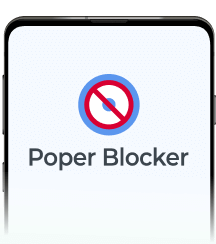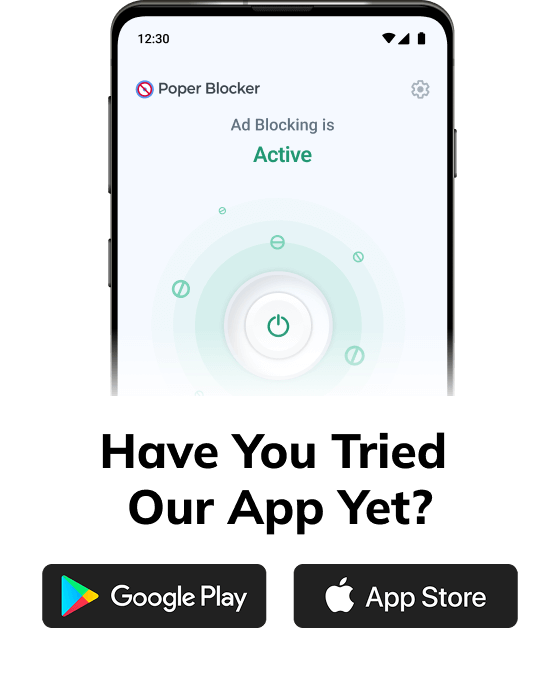From the very first clickable banner ad on the web to today’s highly targeted, sophisticated ad campaigns, the history of online advertising is a very interesting evolution. It started with the very first banner ad on the internet, setting precedence for ads online. Now, there are too many ads, and they have become more complex over the years. Due to the distractions that they cause, technologies like ad-blockers have emerged to protect and improve the user experience. As the web grew, so did the variety and sophistication of web advertising; each phase reflecting a broader technological and social shift. The history of online advertising shows this change, marked by key moments that have thus far shaped the modern advertising landscape we know today.
This increase in ads being used online triggered further development into ad-blocking technologies like pop-up blockers, among other tools, designed to make the user experience smoother. For example, Poper Blocker (Available for Chrome and Edge) is one designed to reduce intrusive types of pop-up ads and make the browsing experience smoother. If we go back to the timeline of internet advertising, we’ll find that these developments were huge. From ad formats to technologies, each of the main milestones online advertising has reached represents a quantum leap toward further engagement, efficiency, and satisfaction of the user.
1970s: the first banner ad
The first banner ad took online advertising by storm on October 27, 1994, when it appeared on HotWired. It was paid for by AT&T at $30,000 for three months in this banner space. Carrying the text, “Have you ever clicked your mouse right here? You will”, this ad was presented in a brightly colored rainbow font, which became incredibly successful. This was exemplary for early internet ad click-through rates at 44%—much higher than today’s rate of about 0.06%. This was the very first online banner ad, marking the stake in the ground for the Internet as a credible medium for advertising. Most importantly, the banner ad proved that users were ready to interact with an ad when it was compelling and relevant.
This can be regarded as a milestone that laid the foundation on which the history of Internet advertising was built. This first internet banner ad ensured a high rate of engagement and sent its message across to businesses and marketers on the myriad possibilities that web advertising unlocked. Although click-through rates would later fall, the continued success of this initial period ensured continuous innovation and experimentation with various formats and targeting strategies. These were early efforts that paved the way for data-driven ad delivery across the sophisticated web today.
1990s: the first pop-up ads
In 1997, Ethan Zuckerman was able to develop the very first code for pop-up ads while he was working on Tripod.com. The way it was done was to display ads such that they remained out of focus of the main content. Effectively, pop-ups were able to establish a route between ad visibility and user content without direct association. This indeed made the ads more visible, but pop-ups soon became notorious for harassing users. As user frustration grew, so did the resolve to block these kinds of interruptive ads. This period in the history of online advertising shows just how delicate the balance is between ad visibility and user satisfaction.
While pop-up ads managed to hold attention at one point, being innovative in their own right, their intrusive nature gave way to a huge backlash from users. Pop-up ads bear very well the example of how something that had its promise once is severely ostracized if it interrupts the user experience too much. This feedback loop helped digital advertising formats constantly evolve to high levels of engagement while ensuring a great user experience. These implement and reject cycles for pop-up ads have helped inform best practices in web advertising toward formats that are as engaging as they are user-friendly.
2000s: social media and YouTube
Then things changed in the 2000s, with the introduction of social media sites. It was in 2006 when Facebook began to launch its targeted ads. YouTube, launched in 2005, also changed the landscape of video advertising. Facebook’s targeted ads used data on demographics and interests, and the launch of YouTube with Google acquiring it in 2006 for $1.65 marked the full throttle of video ads. These platforms allowed the brands to get to their target audience with relevant messages, heavily based on user data availability. The fact that they could run ad messages within the social media experience natively and seamlessly brought a whole new way of reaching users.
Social media has revolutionized all forms of advertising on the internet because of the ability for highly targeted, source-based ad delivery directly into users’ feeds. This more integrated approach stood out sharply against the intrusiveness that characterized earlier pop-up ads and was indicative of a trend toward a more natural-feeling, in-context advertising. For example, brands such as Coca-Cola and Nike have used these venues to construct spectacularly effective campaigns that help bridge their products with target audience segments. Their success has reinforced the fact that highly targeted, contextually relevant ad campaigns really work.
2010s: OpenRTB Protocol and GDPR
In 2010, efficiency in online advertising was boosted by the first form of automated real-time bidding through the OpenRTB protocol. That is what an open bidding standard did in terms of mechanizing the trade of ad impressions between the buying and selling sides. Back in 2018, with growing public concern over data privacy, the European Union introduced the General Data Protection Regulation (GDPR), which requires that advertisers be explicit with users on collecting and processing their data and obtaining express consent. This would ensure more ethical ad practices and help give users more control over their personal data. OpenRTB and GDPR together established a new path of engagement for the advertiser against digital marketing.
The OpenRTB protocol’s ability to steer clear and automate the ad bidding process represented quite a quantum leap in the internet advertising evolution. This technology allowed for much greater granularity in terms of ad targeting and smarter buying of ad space for better engagement rates. On the other side, data privacy under the GDPR reshaped how companies collect and process data, focusing on end-user consent and transparency. Furthermore, the GDPR pushed ethical considerations to the forefront of the agenda for advertisers, hence doing better with companies on how to handle data. The change has actually underscored one shift of strategy in advertising, focusing more on trust and user control.
2020 to present: AI and machine learning
Artificial intelligence (AI) and machine learning technologies have dramatically reshaped online advertising since 2020. Such tools set adjustments in real-time, depending on user behavior, and make ad targeting very personal. AI analyzes any size of data in a fraction of a second, thus improving the relevance and timing of ads. This makes the ads more engaging due to increased efficiency.
For example, AI can deliver specific offers to potential customers at the exact moment they are most likely to make a purchase. On top of keeping users engaged and improvising ad performance, it refines user experience. With the ever-evolving potential of AI, there is room opened for further innovations in sophisticated and more efficient online advertisement strategies.
What’s most important, though, is that artificial intelligence and machine learning only reinforce the industry’s trend toward more ad personalization and efficiency in online advertising. These technologies allowed advertisers to reach such a level of precision and optimization that they might previously have thought unimaginable. In this respect, AI-driven programmatic advertising will empower better segmentation of users, predictive analytics, and real-time bidding—thereby making the ads more relevant and effective.
The future of online advertising
With technology in constant evolution, further transformation awaits the future of online advertising. Third-party cookies, to be phased out by the end of 2024, will bring more emphasis on first-party data collection and therefore change how advertisers reach audiences. New technologies such as blockchain and Web 3.0 technologies are going to reshape ad formats and user interactions. These approaches attempt to push further in security while providing relevant ad experience adjustments to the constantly evolving landscape of privacy regulations. Advertisers have to be ahead of these trends if they want to continue to reach their audiences effectively.
The demise of third-party cookies points toward new ways in which data collection and audience targeting will be done. These transitions further underscore ongoing efforts to address privacy while ensuring the continued effectiveness of ads. The decentralized nature of blockchain technology provides transparent and secure transaction mechanisms that might revolutionize trust in online advertising. On the other side, initiatives on Web 3.0 intend to make ad experiences more intertwined and immersive. Knowing how to stay at the forefront of such trends will be very important; to this end, therefore, for advertisers to keep up, they need to change and innovate at all times.
The journey in online advertising continues
From the first clickable web ad banner in 1994 to AI-powered campaigns of today, online advertising has had a strong journey of relevance and adaptability. Major technological changes and consumer behavior kept reforming this space at every turn so expect to see more types of online ads in the future. Looking ahead, keeping ourselves updated with the trends the industry is taking is quite important in fully exploiting the online advertising arena.
FAQ
How did Facebook’s targeted ads revolutionize online advertising?
In 2006, Facebook introduced targeted advertisements by using users’ demographic and interest data to carve out highly tailored ads. This changed how advertisers hitherto approached audience segmentation and how they went about targeting their advertisements.
What changes has GDPR brought about in online advertising?
Implemented in 2018, the GDPR explicitly required transparency in data collection and user consent, forcefully pushing advertisers toward more ethical behavior. It gave users more control over their data and required more responsible management of that data.
How do AI and machine learning improve ad performance?
AI and machine learning in ad performance mean real-time adjustment against user behavior, going as far as high personalization and contextual relevance. This means better engagement and higher conversion rates.
What is the impact of the phase-out of third-party cookies?
The retirement of third-party cookies in 2024 will further drive advertisers to first-party means of data collection. All of this will mean looking for new strategies for audience targeting and personalization and adapting to changing privacy regulations.


